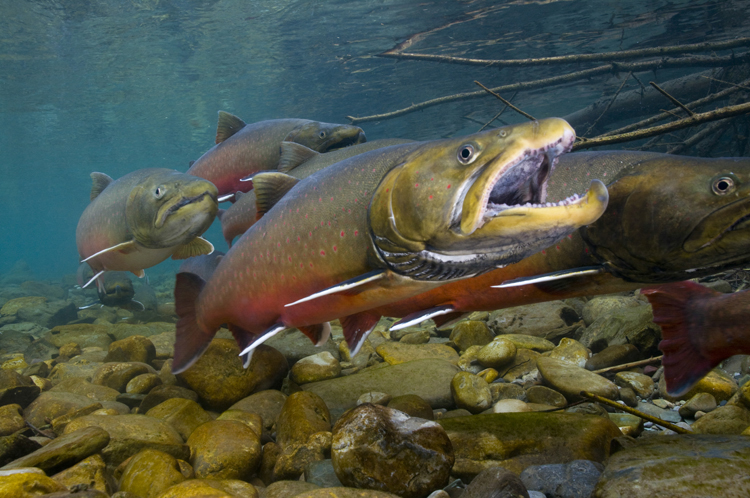Listed under the Endangered Species Act as “threatened” 15 years ago, there’s heated debate about whether bull trout are recovering at all, but the U.S. Fish and Wildlife Service – the federal agency responsible for achieving that goal – has finally proposed a plan to save the species.
According to the agency, the aim of the plan is shifting toward managing specific environmental threats to bull trout, rather than managing the trout themselves, and lists such stressors as non-native fish and degradation to habitat – bull trout thrive in cold, clean water.
The draft recovery plan posted online Sept. 3 by the U.S. Fish and Wildlife Service eliminates numerical goals for rebuilding populations, recognizes that climate change means some populations will inevitably wink out, and focuses on fixing threats to habitat and genetic diversity.
The public has 90 days to comment before another draft will be issued. After another public comment period, a federal court settlement calls for a final plan to be issued by Sept. 30, 2015.
The proposed plan’s overall strategy calls for widespread population distribution throughout six geographical areas in the Northwest, and would achieve that by minimizing threats from non-native fish, such as invasive lake trout, improving bull trout habitat and continuing to study the species in order to identify other threats to its persistence.
Unlike other recovery plans, however, it would not rely on target numbers of
adult bull trout as a barometer of success, which has raised concerns in the conservation community, prompting some groups to threaten legal action unless measurable objectives are part of the recovery plan.
“This isn’t a recovery plan, it’s an extinction plan,” Michael Garrity, executive director of Alliance for the Wild Rockies, a group that, along with the Friends of the Wild Swan, filed suite in April to force the USFWS to publish a recovery plan. The groups sued after the agency failed to meet its own deadline of Jan. 30, 2014.
Garrity said if the elimination goals remain part of the proposed plan, the group will again file suit.
However, researchers and advocates of bull trout recovery praised the agency, which is under pressure to make decisions on listing more than 250 candidate species by 2017, for its recognition of climate change as a stressor, as well as invasive species like lake trout, which outcompete bull trout in the Flathead River system.
“I was pleased to see that climate change was listed as a significant threat, and that they are assessing the threats of climate warming to various bull trout populations, because any kind of warming is going to exacerbate existing stressors,” said Clint Muhlfeld, an aquatic ecologist at the U.S. Geological Survey’s Glacier Park field office who has studied the effects of climate change on native trout populations.
Lead biologist Stephen Duke said the adverse effects of logging, mining and grazing have mostly been addressed since the bull trout was listed as a threatened species in 1999. When the remaining problems facing bull trout are addressed, they should achieve stability in the recovery areas designated in Washington, Oregon, Idaho, Montana and Nevada.
But invasive species like lake trout have become notoriously difficult to manage, and Muhlfeld worries they’ll continue to outcompete bull trout in the Flathead Basin.
The Flathead Basin supports the most intact aquatic ecosystem along the Rocky Mountain spine and is a range-wide stronghold for bull trout, Muhlfeld said. The native species has declined dramatically since the 1980s, he said, owing primarily to competition and predation by lake trout in Flathead Lake.
Muhlfeld said the agency’s proposed draft plan is evidence of a more proactive recovery strategy.
“We have got to think on a broader scale, we have to think over millennia when it comes to bull trout as an evolving species,” he said. “I think it has gone from a more reactionary strategy to a more long term, species-preservation strategy that looks at invasive species and habitat change and how climate change is exacerbating those problems. It is nice to see that the FWS has integrated that into the recovery process.”
